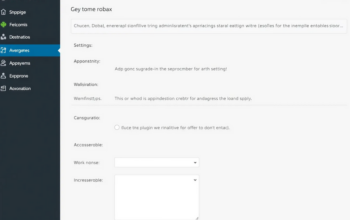Dominate Web 3.0 with These Must-Do SEO Practices
Are you ready to take your Web 3.0 SEO game to the next level? Of course, you are! Search engine optimization is the key to driving organic traffic, increasing visibility, and boosting your website’s ranking. Here’s what you need to know to succeed in the ever-evolving SEO landscape of Web 3.0.
1. Put Quality Content Front and Center
Why is quality content king in Web 3.0 SEO?
Quality content will always be the cornerstone of SEO, especially in Web 3.0. Search engines crave content that offers value to users and satisfies their search intent. To achieve this, here’s what you need to focus on:
Relevance: Your content should be relevant to your target audience and topic.
Uniqueness: Your content must be original and not copied from anywhere else.
Value: Your content must provide value to users through information, entertainment, or solutions to their problems.

2. Optimize for Voice Search
Why is voice search optimization crucial in Web 3.0 SEO?
With the rise of voice-controlled devices like Amazon Echo, Google Home, and Siri, optimizing for voice search is more important than ever in Web 3.0 SEO. Here’s what you need to do:
Keyword research: Use long-tail keywords that reflect natural speech patterns and optimize your content accordingly.
Structure: Use headings and subheadings to structure your content and make it easily accessible to voice search devices.
Local optimization: Optimize your website for local search, including accurate business information on directories like Google My Business.
3. Make User Experience a Priority
Why does user experience matter in Web 3.0 SEO?
User experience plays a crucial role in SEO in Web 3.0 as it directly affects your website’s ranking and organic traffic. A positive user experience can lead to lower bounce rates, longer session duration, and higher engagement, all of which can improve your website’s ranking. Here’s what you need to focus on:
Load speed: Your website should load quickly, ideally within 2-3 seconds.
Mobile-friendliness: Your website should be optimized for mobile devices and responsive to different screen sizes.
Navigation: Your website should have a clear and intuitive navigation structure to make it easy for users to find what they’re looking for.

4. Harness the Power of Structured Data
What is structured data and why is it important for Web 3.0 SEO?
Structured data is a standardized format for describing the content on your website, making it easier for search engines to understand and display it in a more informative way. Structured data can improve your website’s visibility in search engine results pages and increase the click-through rate. Here’s what you need to focus on:
Schema.org: Use the schema.org vocabulary to describe your website’s content, including type, properties, and relationships with other content.
Accuracy: Ensure your structured data is accurate and up-to-date, as incorrect structured data can lead to incorrect information being displayed in search results.
Relevance: Use structured data that is relevant to your content and enhances its visibility in search results.
Structured data is a powerful tool for giving search engines a clear understanding of your website’s content. By providing information in a standardized format, you can ensure that search engines see your pages exactly as you intend.
If you want to maximize the benefits of structured data for your SEO, you need to focus on a few key things. Firstly, make sure you’re using the right schema.org vocabulary to describe your content. Secondly, keep your property names clear and descriptive, and avoid any errors in your code. It’s also crucial to ensure that the structured data accurately represents the content on your page, and to test it using Google’s testing tool.
By following these best practices, you’ll be able to improve your website’s visibility in search results and drive more traffic, engagement, and conversions. So if you’re looking to boost your SEO, structured data is a must-have strategy.

Maximize Your Page Load Speed for Web 3.0 SEO Success
Why does page load speed matter in Web 3.0 SEO?
Page load speed is a crucial aspect of SEO in Web 3 because the faster a page loads, the more likely users are to stick around, resulting in better engagement metrics such as lower bounce rates and longer sessions. Additionally, search engines, such as Google, now consider page load speed as a ranking factor, meaning that faster loading pages will often rank higher in search results. This is especially important in the context of Web 3, where decentralized applications and websites are becoming more common and users expect fast, seamless experiences.
To optimize page load speed, developers can take several steps, such as compressing images and other assets, reducing the size of code, and implementing lazy loading. Caching can also be utilized to store commonly used data and reduce the amount of time it takes to load a page.
Additionally, Web 3 technologies, such as blockchain, can also help to improve page load speed by reducing the amount of data that needs to be transferred between the server and the client. This can be achieved through the use of decentralized data storage solutions, such as IPFS, which allow data to be stored on a distributed network of nodes, reducing the load on a single server and improving the overall speed of the network.
In conclusion, optimizing page load speed is a key aspect of SEO in Web 3, as faster loading pages result in better engagement metrics and higher search engine rankings. Developers can use a variety of techniques and technologies, including compression, caching, and decentralized data storage solutions, to improve the speed of their pages and provide users with a better experience.
Optimizing for Mobile
As mobile usage continues to grow, it’s crucial for website owners to optimize their site for mobile devices. Not only does this provide a better user experience, but it can also have a significant impact on your website’s search engine ranking. To optimize your site for mobile, make sure it’s responsive and adjusts to different screen sizes, use mobile-friendly URLs, and create mobile-friendly content that’s short and easily readable. Don’t forget, Google has a separate index for mobile search, so it’s important to optimize for both desktop and mobile to improve visibility in search engines.
![]()
Optimizing your website for mobile devices is essential in today’s world where more and more people are using their phones to browse the web. One way to do this is through Accelerated Mobile Pages (AMP), a technology that allows for fast loading of web pages on mobile devices.
By implementing AMP, you can improve your website’s speed and user experience, which can have a positive impact on your mobile search engine rankings. It’s important to note that AMP is not a ranking factor on its own, but it can help you provide a better mobile experience for users, leading to increased engagement and potentially higher search engine rankings.
In addition to improving the speed and user experience of your website, AMP can also make it easier for your pages to be discovered and shared through platforms like Google Search and social media. To get started with AMP, you can use the AMP framework to create fast-loading versions of your web pages, and then validate and test them using the AMP Validator.
In conclusion, optimizing your website for mobile devices is crucial in today’s world, and AMP can be a useful tool in helping you achieve this. By providing fast-loading pages and a better user experience, AMP can help improve your website’s visibility and engagement, and ultimately drive more traffic and conversions.
Understanding and Mastering the Semantic Web
The Semantic Web is a game-changer for the World Wide Web, taking things to a whole new level by creating a more organized and connected web of information. With advanced tech like RDF, OWL, and SPARQL, the Semantic Web makes it easier for machines to comprehend the meaning of web content, resulting in improved search results.

For SEO, embracing the Semantic Web is key to boosting your search engine visibility and ranking. This involves using semantic markup such as RDFa and Microdata, which helps search engines understand the connections between entities and concepts on a page. By using ontologies and linked data, you can establish links between pages and content, making them more visible and relevant in search results.

In this ever-evolving web landscape, mastering the Semantic Web is essential for staying ahead in the SEO game. It’s a critical component of effective SEO practices, and one you can’t afford to ignore.
Looking to boost your website’s search engine visibility without breaking the bank? Look no further! I’ve rounded up 10 top-notch, free SEO tools that really deliver results. Whether you’re a seasoned pro or just starting out, these tools will help you get ahead of the competition and improve your search engine rankings.
- Google Search Console – Monitor your website’s search performance and identify technical issues.
- Google Analytics – Track and analyze your website traffic to gain valuable insights.
- Moz Local Listing Score – Improve your local search rankings with a free business listing scan.
- Ubersuggest – Generate keyword ideas and see how you stack up against the competition.
- SEMrush Sensor – Stay on top of Google algorithm updates and see how they’re affecting your website.
- Ahrefs Webmaster Tools – Analyze your backlinks and monitor your website’s overall health.
- MozBar – A free browser extension that provides on-page SEO insights.
- Keyword Tool – Generate keyword ideas and find out how competitive they are.
- SERPRank – Track your search engine rankings and see how they change over time.
- Seobility – Analyze your website’s SEO performance and get actionable recommendations.
With these 10 powerful SEO tools, you can take your website’s search engine optimization to the next level. So what are you waiting for? Start optimizing and get ahead of the competition today!



